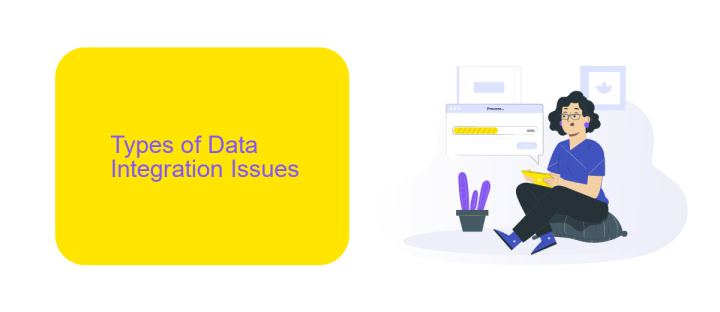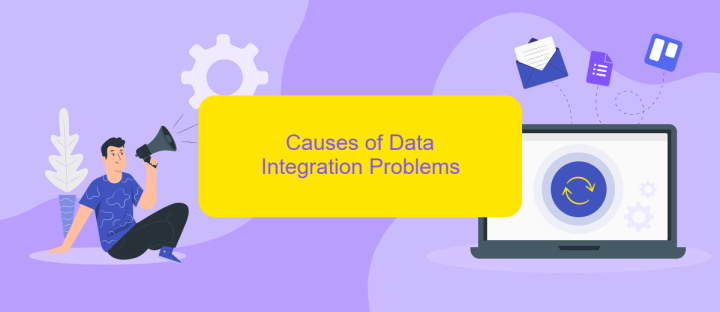Data Integration Issue
Data integration is a critical challenge for organizations seeking to leverage diverse datasets for comprehensive insights. It involves combining data from different sources into a unified view, which can be complicated by varying formats, inconsistent data quality, and disparate systems. Addressing these issues is essential for ensuring accurate analysis, informed decision-making, and streamlined operations in today's data-driven environment.
Data Integration Issue: Main Challenges
Data integration is a critical aspect of modern business operations, yet it presents numerous challenges that can hinder efficiency and data accuracy. One primary challenge is the heterogeneity of data sources, which can include various databases, cloud services, and on-premises systems. This diversity often leads to inconsistencies and difficulties in data mapping.
- Data Quality: Ensuring data accuracy, completeness, and consistency across different sources.
- Scalability: Managing the increasing volume of data as businesses grow.
- Real-time Integration: Achieving timely data synchronization and processing.
- Security: Protecting sensitive data during transfer and integration.
- Compatibility: Integrating data from diverse systems with varying formats and structures.
Tools like ApiX-Drive can significantly alleviate these challenges by providing a seamless way to connect and synchronize data across multiple platforms. ApiX-Drive offers user-friendly interfaces and robust features that simplify the integration process, ensuring data consistency and real-time updates. By leveraging such tools, businesses can enhance their data integration efforts, leading to more informed decision-making and streamlined operations.
Types of Data Integration Issues

Data integration issues can be broadly categorized into several types, each posing unique challenges. One common issue is data inconsistency, where data from different sources may not match or align correctly due to variations in formats, units, or naming conventions. This can lead to inaccurate analytics and decision-making. Another significant issue is data redundancy, where duplicate data entries across various systems can cause inefficiencies and increase storage costs. Ensuring data quality and consistency across all integrated systems is crucial to avoid these pitfalls.
Another type of data integration issue is the lack of real-time data synchronization. In many cases, data updates in one system are not immediately reflected in others, leading to outdated or stale data being used for critical business processes. This is where services like ApiX-Drive can be beneficial. ApiX-Drive offers automated data synchronization across various platforms, ensuring that all systems are updated in real-time. Additionally, security concerns such as unauthorized access and data breaches are critical issues that need to be addressed with robust encryption and authentication mechanisms during the integration process.
Causes of Data Integration Problems

Data integration problems often arise due to a variety of factors that can complicate the seamless merging of data from disparate sources. Understanding these causes is crucial for implementing effective solutions.
- Data Silos: When data is stored in isolated systems without proper interconnectivity, it becomes challenging to integrate and analyze comprehensively.
- Inconsistent Data Formats: Different systems may use varying formats for data storage, leading to difficulties in unifying the data for integration.
- Poor Data Quality: Inaccurate, incomplete, or outdated data can hinder the integration process, resulting in unreliable outcomes.
- Lack of Standardization: The absence of standardized protocols and practices across systems can create significant barriers to effective data integration.
- Technical Limitations: Legacy systems or outdated technologies may not support modern data integration techniques, complicating the integration efforts.
To address these challenges, leveraging advanced integration platforms like ApiX-Drive can be highly beneficial. ApiX-Drive offers automated solutions to streamline the integration process, ensuring data from various sources is accurately merged and easily accessible. This can significantly enhance the efficiency and reliability of data integration efforts.
Overcoming Data Integration Challenges

Data integration challenges can significantly hinder the efficiency and effectiveness of business operations. Overcoming these challenges requires a strategic approach and the right tools to ensure seamless data flow across various systems.
One of the primary steps in addressing data integration issues is to identify the specific problems and their root causes. This involves a thorough analysis of the data sources, formats, and the existing integration processes. By understanding these elements, businesses can develop targeted solutions to streamline their data integration efforts.
- Standardize data formats to ensure compatibility across systems.
- Implement robust data validation and cleansing processes.
- Utilize middleware solutions to facilitate data exchange.
- Leverage integration platforms like ApiX-Drive for automated workflows.
Using integration platforms such as ApiX-Drive can significantly simplify the process of connecting disparate systems. These platforms offer pre-built connectors and user-friendly interfaces, enabling businesses to automate data transfers without extensive coding. By adopting such solutions, companies can enhance data accuracy, reduce manual effort, and improve overall operational efficiency.


Best Practices for Seamless Data Integration
Effective data integration begins with a clear understanding of the data sources and their respective formats. Establishing a well-defined schema and standardized data formats ensures consistency and reduces the risk of errors during the integration process. Leveraging automated tools, such as ApiX-Drive, can significantly streamline this process by providing pre-built connectors and workflows that simplify the integration of various data sources. Regularly monitoring and validating the data flows can help in identifying and rectifying any discrepancies promptly.
Another best practice is to implement robust data governance policies. This includes defining access controls, maintaining data quality standards, and ensuring compliance with relevant regulations. Utilizing services like ApiX-Drive allows for seamless integration while maintaining high standards of data security and integrity. Additionally, documenting the integration processes and maintaining an updated log of changes can facilitate easier troubleshooting and future updates. By adhering to these best practices, organizations can achieve a seamless and efficient data integration experience.
FAQ
What is data integration, and why is it important?
What are common challenges in data integration?
How can I ensure data quality during integration?
What are the benefits of using automated tools for data integration?
How do I choose the right data integration tool?
Apix-Drive will help optimize business processes, save you from a lot of routine tasks and unnecessary costs for automation, attracting additional specialists. Try setting up a free test connection with ApiX-Drive and see for yourself. Now you have to think about where to invest the freed time and money!

